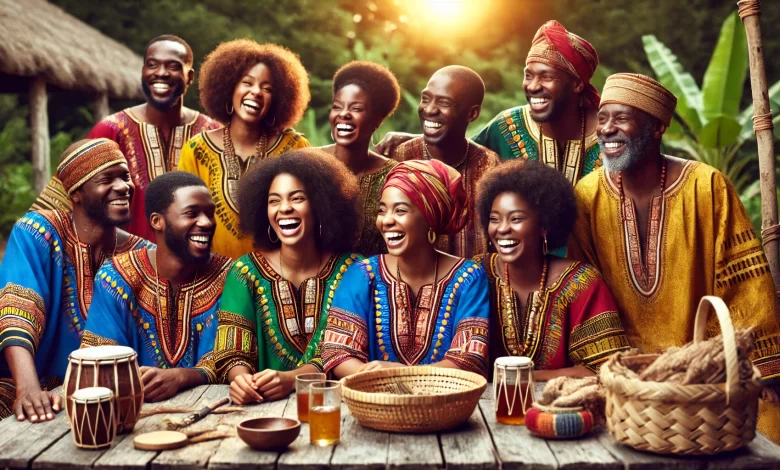Celebrating Gullah Geechee Month: Honoring a Unique Cultural Legacy

Each October, we celebrate Gullah Geechee Heritage Month to honor the rich history, resilience, and cultural contributions of the Gullah Geechee people. These descendants of enslaved Africans have preserved one of the most unique and enduring cultures in the United States, rooted in West and Central African traditions that have been passed down through generations. Their legacy is woven into the very fabric of American life, influencing our language, music, cuisine, and crafts, all while maintaining a distinct identity.
Who are the Gullah Geechee?
The Gullah Geechee people are descendants of enslaved Africans brought to the coastal Lowcountry of South Carolina, Georgia, Florida, and North Carolina during the transatlantic slave trade. They developed a distinct culture on the isolated sea islands and coastal plains of the southeastern United States. Due to the region’s physical separation from the mainland and the Africans’ knowledge of rice cultivation, they were able to preserve many of their African traditions and develop a unique cultural identity.
The term “Gullah” is often associated with the people of South Carolina, while “Geechee” is used for those in Georgia and northern Florida. Some historians believe “Gullah” derives from “Angola,” a region in Africa from which many of the enslaved people came, while “Geechee” may come from the Kissi (or Kisi) people of Sierra Leone and Liberia. Over time, Gullah and Geechee have become interchangeable terms that reflect a shared culture and language.
Origins in Africa
The Gullah Geechee people are primarily descended from West Africans who were captured and sold into slavery for their specialized knowledge of rice cultivation, a key crop in the Lowcountry’s economy. The rice fields of the American Southeast mirrored the wetland environments of Sierra Leone, Senegal, and Gambia, where Africans had long mastered rice production. This expertise was crucial to the success of plantations in this region, leading slaveholders to specifically seek out people from these African rice-growing regions.
These enslaved Africans brought with them not only their agricultural skills but also their cultural practices, languages, and spiritual beliefs. Over time, these elements blended with influences from Native American and European cultures to form what we now recognize as Gullah Geechee culture.
Creating a New Culture: Language, Traditions, and Art
One of the most distinctive aspects of Gullah Geechee culture is their language. Gullah is an English-based creole language infused with African syntax, vocabulary, and speech patterns. Because of the isolation of the sea islands, the Gullah Geechee people were able to preserve more of their African linguistic heritage than other African American communities. Words such as “goober” (peanut), “gumbo” (a dish with West African roots), and “buckra” (a term for white people) are all Gullah words that have made their way into the broader American lexicon.
Music has also played a central role in Gullah Geechee life, with spirituals and work songs that reflect African rhythms and call-and-response patterns. Songs like “Kumbaya,” which means “come by here” in Gullah, have become universally recognized and are deeply rooted in Gullah Geechee spiritual traditions. Their music has had a profound impact on the development of American genres like gospel, blues, and jazz.
Basket weaving, a craft practiced for centuries in West Africa, is another hallmark of Gullah Geechee culture. Today, the sweetgrass baskets made by Gullah artisans in South Carolina are prized for their beauty and craftsmanship. The baskets, traditionally used for winnowing rice, are now sold as decorative and functional items, but they maintain the same techniques and designs that were brought over from Africa.
Spirituality and Belief Systems
The Gullah Geechee people have maintained a deep spiritual connection with their African ancestors through religious practices. Their spiritual beliefs blend African traditions with Christianity, resulting in a faith that is both deeply communal and personal. Practices like ancestor veneration, rootwork (conjure), and herbal healing are all part of their spiritual tradition. As discussed earlier, Hoodoo—a form of folk magic and healing—has its roots in Gullah Geechee spiritual practices.
Contributions to American Life
The Gullah Geechee culture is not only vital to the history of African Americans but also to the broader story of the United States. Many aspects of American life can be traced directly to Gullah Geechee traditions:
- Cuisine: The Gullah Geechee’s influence on Southern cooking is profound. Dishes such as Hoppin’ John (black-eyed peas and rice), okra soup, and gumbo are rooted in West African culinary traditions. The concept of “one-pot” meals, using rice as a base and layering in vegetables and meats, was brought over from Africa and remains a staple of Southern and Creole cuisine.
- Language: As mentioned earlier, Gullah words like “goober” and “gumbo” have entered American English. Phrases and grammatical patterns found in African American Vernacular English (AAVE) can also be traced back to Gullah speech patterns. This creole language has influenced the way African Americans across the country communicate.
- Storytelling and Folklore: Gullah Geechee folklore, including stories about Brer Rabbit, originated from African trickster tales. These stories were used to pass on wisdom and survival tactics, often disguised as entertaining tales of animals outsmarting each other. The stories have since entered American popular culture, particularly through Disney’s adaptation of Brer Rabbit stories in “Song of the South”.
- Craftsmanship: As mentioned before, sweetgrass baskets, now a symbol of both art and history, are one of the most visible and lasting contributions of Gullah Geechee culture. These baskets are not only a testament to African craftsmanship but also a connection to the agricultural practices that shaped both African and American life.
The Legacy of Survival and Cultural Preservation
Despite centuries of enslavement, segregation, and marginalization, the Gullah Geechee people have preserved their cultural heritage with remarkable tenacity. Today, organizations like the Gullah Geechee Cultural Heritage Corridor Commission work to preserve and promote this culture, ensuring that it continues to thrive for future generations. The Gullah Geechee Cultural Heritage Corridor, which extends from Wilmington, North Carolina to Jacksonville, Florida, was established by Congress in 2006 to protect the Gullah Geechee way of life.
Efforts to preserve Gullah Geechee culture have also included festivals, educational programs, and community initiatives that celebrate the contributions of this community to American history and culture. Scholars and cultural advocates work to ensure that younger generations of Gullah Geechee people can remain connected to their heritage and understand the role their ancestors played in shaping the nation.
Celebrating Gullah Geechee Month
As we celebrate Gullah Geechee Heritage Month, we must recognize that the story of the Gullah Geechee people is one of resilience, creativity, and profound cultural impact. From the language we speak to the food we eat, from the music we listen to the stories we tell, Gullah Geechee culture is woven into the fabric of American life. It is a living testament to the strength of the human spirit, the power of cultural preservation, and the ongoing contributions of African Americans to the nation’s identity.
This month offers a time to honor and learn from the Gullah Geechee people, whose enduring traditions continue to enrich our collective cultural heritage. Their legacy reminds us of the importance of preserving history and celebrating the diversity that makes America what it is today.
Sources
- National Park Service. “Gullah Geechee Cultural Heritage Corridor.” National Park Service, www.nps.gov/guge/index.htm.
- Georgia Public Broadcasting. “Who Are the Gullah Geechee People?” PBS Learning Media, www.pbslearningmedia.org.
- Diouf, Sylviane A. Servants of Allah: African Muslims Enslaved in the Americas. NYU Press, 1998.
- Pollitzer, William S. The Gullah People and Their African Heritage. University of Georgia Press, 2005.





